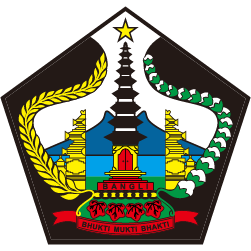Symbolization Of Days In The Balinese Calendar, Pancawara
Symbolization Of Days In The Balinese Calendar, Pancawara.
There are many reasons why Bali is called The Island of God. One of them thanks to the beauty of the natural scenery. Another reason is that culture, art and beliefs are still very tightly held to this day. If you visit Bali, you will see the rite performed by the majority population. Every activity is attached to wewaran, or the daily five cycle, which is called Pancawara.
Pancawara has five elements, namely Pon, Wage, Kliwon, Umanis, and Paing. Each element has its own symbol based on the position of the moon. The five elements describe taste and are symbolized by the properties of animals. Quite unique, right? Yes, the origin of the wewaran is unknown. However, it might be based on astronomy.
Umanis or Legi are like cats and rats. Today this authority has a character that is sensitive, docile, and cheerful like a cat. Someone who is born on Umanis day has an open nature and likes to get along with anyone. However, if they feel blocked, then they will feel suspicious. While rats have a vengeful character. Pretty similar to the zodiac, right?
In the Balinese calendar, it also depicts the character of a person who can be read through Pancawara and Saptawara. Saptawara has seven counts. Both are often used to determine good days.
Furthermore, Paing, symbolized by a tiger. A person born on that day has a roaming, independent nature. However, because the tiger is the king of the forest, it has many enemies. While Pon symbolizes a brave goat. Wage is symbolized by a cow, and its nature is straightforward.
Last is Kliwon day. Kliwon is symbolized by apes and dogs. Both of them do have very contrasting characters. Monkeys cannot be docile, whereas dogs are the most loyal animals.
Pancawara also has properties in its elements. Umanis is filled with the 'flavor' element. Then, Paing ‘creation’, Pon ‘idep’ or mind, Wage ‘angen’, Kliwon ‘intelligence’.
Overall, the Balinese Calendar or the Saka Calendar refers to the lunar journey around the Earth. The Saka calendar itself also refers to the sun's rotation. Well, the beginning of the Saka year is on Saturday, March 14 78 AD. That day is one day after the coronation of Aji Saka, a king in India.
Many palms that explain the time which is also called wariga. Such as Sundari Gading, Panglantaka, Sundari Cemeng, Purnama Tilem Transfer, and Nampi Sasih Calculation. Although complex, the Balinese calendar is actually very mathematical, systematic, geographical, and at the same time religious. The calendar system also becomes a guide in daily activities which covers various aspects, such as aspects of culture, tradition, art, profession, and religion.



















